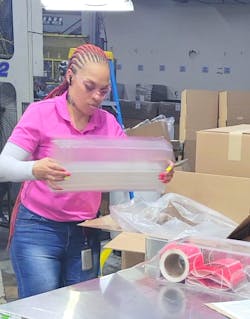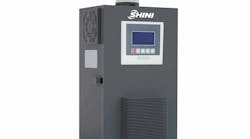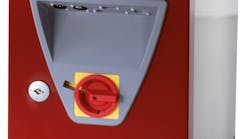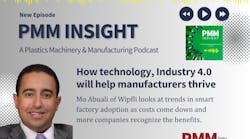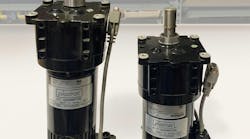By Karen Hanna
Every few months, Michael French, the president of Comco Plastics Inc., Huntington Station, N.Y., picks up a mop and scours the bathrooms of the machining and fabrication shop his family has owned for three generations.
No one’s above the task.
“We do not celebrate ego. Ego is a problem,” French said. “On our applications for employment, there is something that says, ‘The president of the company takes a turn cleaning the bathroom and the lunchroom. If hired, would you be willing to clean the bathroom and lunchroom?’ And there’s a box for ‘Yes’ and ‘No,’ and anyone who checks ‘No,’ we do not hire.”
Rapport, trust and communication underpin the cultural changes French and other lean manufacturing proponents said are key to undertaking a journey of continuous improvement. According to proponents, lean manufacturing applies to all kinds and sizes of companies — from shops dwarfed by 35-employee Comco to industry giants like Toyota Motor Corp., which first pioneered the systematic approach toward eliminating waste.
Lean is simple to understand, if not easy to implement, according to some practitioners and advocates, including David Rizzardo, who wrote a book on the topic called, “Lean – Let’s Get It Right!”
“Think of lean simply as a gap of where we are now to where we want to be,” he explained.
Since fully embracing lean in 2018, Comco has seen its on-time-delivery percentage rate climb from the mid-80s to 98. Its revenues have doubled, French said.
“If you’re not attempting lean, even a little bit, it’s probably hurting you more than you know,” French said. “If you’re in a manufacturing company, and you’re not doing continuous improvement, [at least] half-heartedly, you probably won’t survive the next 5-10 years, if they indeed even survived [the] COVID [pandemic].”
Big payoff
Rather than simply churning out parts and weathering one day to the next, plants that adopt lean are focused on improving in every area all the time. But the effort is worth it, consultants and practitioners said.
Results can include reductions in scrap, increased machine uptime, more efficient use of labor and better on-time rates.
“After a lean implementation, a ballpark number that they can expect is 20 percent of their company payroll. So, say, for instance, the company payroll is a million dollars, they can expect $200K a year in savings, which is a conservative number,” said Henry Foppoli, a managing partner at the AMSaxum consulting firm.
“When you’re eliminating the waste throughout these processes, you’re freeing up space, you’re freeing up labor, and that can be used for new business,” said fellow consultant Rizzardo, associate director of the Maryland World Class Consortia Ltd., a nonprofit that provides consulting on lean training. “You’re going to be a better supplier to the customers you already have, and you’re going to put yourself in position to grow.”
For one employee who has experienced life in a plastics processing plant both before the implementation of lean principles and in the midst of a lean journey, that cultural shift has meant everything.
“I’ve seen the worst, and I’m experiencing the good,” said Melva Douglas, who has worked at both Maryland Thermoform and Mercury Plastics MD — a new company that emerged out of the sale of Maryland Thermoform as it teetered on the brink of financial collapse.
Empowering workers
Before it started its lean journey, Comco was disorganized, said Victoria Ramirez, estimations specialist for order writing and purchasing for the company.
Learning about lean principles inspired her to suggest a change — to color-code or ID with pictures boxes of stock materials, components and fixtures, so she and her colleagues can see at a glance what’s available.
Lean, she said, “makes my job easier [so I can] always be productive throughout the day, and I can always apply it in my personal and daily life. I learn in our lean journey on how we evaluate the problem, how we are going to identify the potential solutions and how are we going to apply it."
A goal of getting organized kicked off change for the company, when Comco leaders seized on the chance to plot out a new facility in a move several years ago from Queens to Long Island — with a more rational workflow, they realized they could achieve greater efficiency. But change hasn’t stopped there.
“Ten years ago, myself or my top leadership had to make every decision. Now, we have 35 decision makers who are educated in lean. I think that’s probably the biggest factor for our success,” French said.
The start of each shift illustrates how committed the small shop is to continuous improvement — instead of firing up the machines and rolling out parts, every employee spends the first half hour of his or her day trying to find ways to make things better. Companywide meetings lay bare information employees need to develop insights and take ownership of the process.
To ensure buy-in, the ask at first was very modest, as French recalled: “We wanted them to say, ‘Hey, listen, make an improvement that saves us two seconds.’ ”
That approach respects a basic tenet of lean — the value of people in identifying and overcoming challenges.
The waste of human potential is considered the eighth of the inefficiencies targeted by lean. The others — waiting, overproduction, unnecessary movement of materials, overprocessing, excessive inventory, unnecessary employee movement and defects — were identified when the approach first took shape.
But only the last one — human imagination — provides ways to address all the rest.
“Who knows better about the job than people doing the job?” Rizzardo asked.
Day by day, even small wins add up.
For her part, Ramirez has high hopes.
“In the future, I view our plant to have 100-plus employees and expand to have a bigger facility and to become the best manufacturing in the world that will satisfy our customers with the quality of our product and services we provide.”
Waste not
To hear lean proponents discuss the approach, you might get the sense it all starts with a question, or even a complaint. “Why do we do things this way?” “Why not try something else?” “Isn’t there a better way?”
Before its transformation into Mercury Plastics, Maryland Thermoform had plenty of question marks. In 2017, prior to beginning its lean journey, absenteeism was 25 percent. Scrap rates were around 20 percent.
If those numbers alarmed managers, no one asked Douglas for answers.
Then again, to hear her tell it, neither she nor anyone else really cared.
The prevailing attitude was, she recalled, “ ‘I’m just going to do my eight hours and go home.’ ”
Douglas, who started her job in 2012 as a temporary picker/packer, admits she was late to work all the time.
“It felt like we were a different company separated from management,” she said. “We could not go to the front of the business. We had certain areas in the business where we couldn’t go; we couldn’t do things. So, we really didn’t.”
Making change
Maryland Thermoform was adrift — Douglas said she believed the company was going under — and needed new direction.
It chose a man who admits his plastics expertise wouldn’t have opened any doors for him.
“I consider myself a leader of people, not a doer of things,” said Carl Livesay, who took the reins five years ago, two years before Maryland Thermoform’s sale to Mercury Plastics LLC.
He recognized everyone’s involvement would be critical.
“When we started, our single goal was survival,” Livesay said. “People were undervalued and underpaid. We needed to re-imagine operations with an emphasis on process control, cost reduction and waste elimination.”
According to lean principles, the path to improvement often begins with a literal walk — and that’s what Livesay did.
He watched how people interacted and tracked their eyes when they talked to each other. He asked about their families.
He saw workers like Douglas, who he believed had untapped potential.
“The first few days, I was just real quiet. I just wandered around, and I’d go spend a little bit of time with this person or in this department, or if I saw somebody sweeping the floor, grab a broom and help them sweep the floor and just start talking with people, and you start to learn and observe,” he said.
At first, Douglas said, she didn’t understand what he was after.
“Carl said, ‘Now, if you got any good ideas out on that production floor, that’ll help with people’s steps, or bending over, or reaching, or things that would bring things in and keep it tidy and neat, go for it.’ So, he let me put some ideas that I’ve had into place,” she said.
The first big change was new lights — a suggestion by a line employee Livesay admits he initially didn’t understand. To him, the lighting already was adequate.
“She said, ‘When you’re standing up on the machine, and you’re inspecting the parts, there’s not enough light, so, we can’t tell if there’s a blemish in the part … until it gets farther down the line,’ ” Livesay recalled. “It was like somebody hit me in the face with a cold fish. I was like, ‘Oh, damn, that’s just way too easy.’ ”
With data showing that quality improved on the line with the improved lighting, lighting went up above machines throughout the plant.
Getting buy-in
Making employees aware that their input — positive or negative — is valued is a challenge, especially at first.
“You’ve got to establish trust between the employees and the leadership,” Livesay said. “And that’s a difficult thing to do. Sometimes it takes a very long time, especially in a troubled company because, in a troubled company, a lot of times people are treated very poorly. They’re treated a lot like a commodity."
On one hand, that means celebrating every win; on the other, it means maintaining composure when things go wrong.
For Douglas, a mother of three sons, Livesay’s interest in workers’ families showed he was a man she could trust. Evidence that things were changing in the plant came when she started making suggestions — and Mercury started implementing them. She told Livesay she thought the boxes workers packed should be stored where workers use them.
Now, instead of walking all over the 40,000-square-foot facility, workers have designated a space near their workstation for the materials they need.
With that first change, Douglas was on board.
“After I did that, and I’d seen how good it was working, I started doing other things,” Douglas said.
Livesay, who has spent hundreds of dollars on special thank-you cards for employees, took notice of Douglas’ initiative.
“We just haven’t found anything Melva can’t do,” Livesay said.
“When Carl came ... the next month that he was there, they pulled me into the office, and I got the biggest increase ever, and I was just like, ‘Are you kidding me? Like, is this really happening?’ ” Douglas recalled. Her first raise under Livesay was around $6 an hour.
She said she didn’t realize — until Livesay broke it down for her — that she was underpaid.
Originally a temp worker with opinions no one valued, she’s now a first-shift supervisor.
Dealing with bad news
Positivity also is important when things go wrong, lean practitioners said.
At Comco, failure isn’t penalized, French and Ramirez said.
“Our company values failure because that’s how we learn from it, and we will keep trying until we succeed,” Ramirez said. “There is no time limit; we just continue to improve.”
That’s Livesay’s attitude, too.
At one time, before coming to Mercury, Livesay said, he worked as supervisor at another shop when a machine operator named Frank entered his office, shaking. He’d spoiled a $10,000 part.
Livesay said he listened as Frank recounted how he had made the mistake, and what he had done to prevent it from happening again. Frank was shocked by Livesay’s calm.
“I told Mr. Frank, ‘I could yell at you if you’d like me to, but you seem to have already covered all the bases,’ ” Livesay recalled.
In a later conversation, when the irate customer asked what Livesay intended to do about the incident involving the part — the first Frank had ruined in 2.5 years of running it — Livesay was more forceful.
“I said, ‘The honest answer is I’m not going do a damn thing about it.’ The [customer’s] general manager looked at me, and I said, ‘Before you say anything, what’s the scrap rate in your shop?’ ”
Celebrating success
Materials and machines might outpace labor costs, but lean practitioners said people — the human potential represented by lean’s eighth efficiency — are more valuable.
Evidence for the journey’s success at Mercury comes with data: Absenteeism has plunged below 3 percent, and the scrap rate is just 7 percent.
But statistics aren’t the only indicator.
According to Douglas, the way people are treated certainly has changed.
“I love my team, because everybody works together,” she said. “It wasn’t like that at first. Back then, everybody was confrontational; they weren’t communicating. Now, we all communicate.”
According to French, Comco’s wages are among the best in its area. But, he said, “While we want everyone to enjoy where they work, to be proud of where they work, we do demand excellence. And, for that, we pay higher than most of the companies around here.”
For Livesay, the need to be able to reward and promote high performers like Douglas brought urgency to the lean journey.
Since 2017, when it had 96 full-timers and around 20 or more temps, the company has lost a lot of workers — but revenue last year was up 60 percent.
Livesay said he’s not in the business of firing people; most show themselves out.
“When there’s a culture of growth and a culture of mutual respect, what ends up happening is the people that do like that, they typically really thrive in that environment. The people that don’t, the curmudgeons, they get very frustrated,” he said.
With greater productivity, though, Mercury has better cash flow to boost workers like Douglas.
That means events like hot dog Fridays and Chick-fil-A biscuit breakfasts, but also better pay, and — for the first time in Douglas’ time at the plant — widespread training.
Overall wages over the last four years are up 50 percent, according to Livesay.
“When you’ve got more cash to work with and more cash to pay people, people get more excited; the more excited people get … the better they do in training, the more you invest in training, the less tolerant they are of people that don’t think the way they think from a lean or an optimization viewpoint,” he said.
In addition, to provide a better atmosphere, renovations are under way, with new machines and fresh paint.
Despite a cyclical dip in orders, Livesay said he wants workers to know their jobs are safe.
“We’re just hunkered down. We haven’t laid a single person off; we’re not planning on laying anybody off. Nothing whatsoever. We’re catching up on a lot of other projects that we weren’t able to get to. But we’re trying to make sure [that] we made a commitment to our people that if you give us 40 hours of your time, we’ll make sure you've got 40 hours of work every week,” he said.
For 46-year-old Douglas — who once looked at other jobs in fields in data entry — the plant represents the future. In fact, she encouraged her sons to get experience in the work world with jobs at the company when they were still in school.
For the first time, she said she has a career for the long term.
“Seeing all the improvement that’s going on, it’s just like, ‘Wow, I wonder what else is in store for me here?' ”
Karen Hanna, senior staff reporter
Contact:
AMSaxum Inc., Burlington, Ontario, 888-772-2809, www.amsaxum.com
The Maryland World Class Consortia Ltd., Joppa, Md., www.leanmaryland.com
